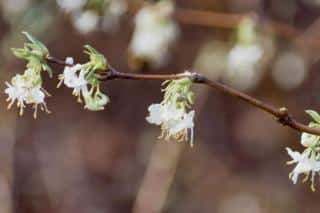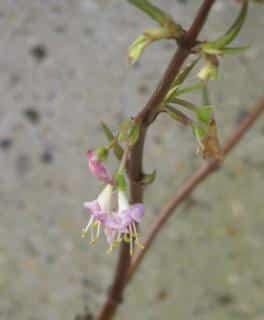

Winter honeysuckle, Lonicera standishii, is among the unavoidable winter blooming shrubs.
A List of Lonicera standishii facts
Name – Lonicera standishii
Family – Caprifoliaceae (honeysuckle family)
Type – shrub
Height – 3 to 6 ½ feet (1 to 2 meters)
Exposure – full sun
Soil – ordinary
Foliage – deciduous or evergreen – Flowering – Winter/Spring
Caring for it is easy and both foliage and blooming are extremely ornamental.
Honeysuckles are planted in fall, but it’s also possible to plant them up to spring. Apart from these two ideal periods, avoid freezing and sweltering heat.
As for placing, favor any sunbathed exposure.

When your honeysuckle starts growing a bit sparse, it is also possible to trim it back severely, it will recover with renewed growth beautifully.

This plant boasts white flowers that will decorate our gardens in winter, either planted in the ground or in pots.
Although the foliage is evergreen, in colder climates it is only partially evergreen, and might lose some of its leaves.
Winter honeysuckles are also perfectly suited to shaping into a hedge.